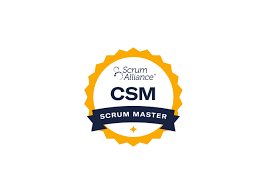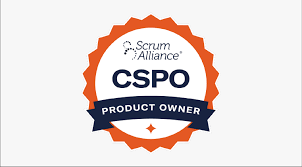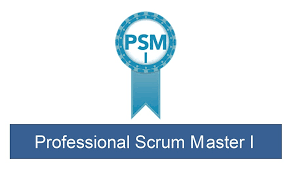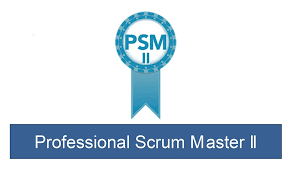The Certified ScrumMaster (CSM) certification confirms your knowledge of Agile principles and the Scrum framework. It provides professionals with the ability to support team collaboration, identify and resolve obstacles, and promote ongoing improvement. It is particularly beneficial for those working in Agile environments, as it strengthens leadership abilities and helps organizations effectively implement Scrum.
Careers Enabled by a CSM Certification:
A Scrum team's leader is typically a professional who works in the Scrum team.
One of the most popular certifications for this role is Certified ScrumMaster (CSM).
A Scrum Master is responsible for overseeing meetings, Agile principles, processes, and values in the team. This is crucial to the approach. For those starting their career or transitioning to a new profession, the CSM course is designed as 'one-stop shopping'.
Many jobs can benefit from the skills acquired through CSM.
The following are some of the primary functions:
1) Scrum Master:
Keeping the Scrum methodology in perspective is the responsibility of the assigned team's Scrum Master.
Managing meetings, including daily stand-ups, definition of Done and Ready, Agile estimation, project management, and retrospectives.
The utilization of Scrum tools is crucial for enhancing the efficiency and effectiveness of teamwork in a company.
By obtaining the CSM certification from Scrum Alliance, one can gain a thorough understanding of Scrum and the job description of Scrum Master.
The typical salary for a Product Manager is between $98,000 and $121,000, but this range depends on the position, experience, and industry. Additionally...
2) Senior Scrum Master:
A Scrum Master certification can boost one's credibility and contribute to career growth.
Senior Scrum Masters are responsible for overseeing more intricate Agile projects compared to a typical Scrum Master.
Additionally, it serves as a foundation for more sophisticated certifications like A-CSM.
By obtaining a CSM certification, Scrum Masters can advance their careers and be recognized as professionals.
Typically, Senior Scrum Masters earn between $89,000 and $132,000.
3) Chief Scrum Master:
An individual in charge of Scrum management is known as a Chief Scrum and holds significant influence in the company.
In companies that use Scrum across multiple teams, this role is frequently utilized.
All levels of the job require fundamental knowledge and skills to be covered by CSM training.
The initial stage of obtaining CSM is to obtain more advanced certifications, such as A-CMA, SSM, SASM, and CSP-SM.
Depending on the company, location, and industry, the annual salary of a Chief Scrum Master can be anywhere from $127,000 to $155,000.
Benefits of CSM Certification:
Among the most sought-after certifications in the Agile industry is the CSM certification.
It's a great resource for those who want to learn the Scrum language thoroughly.
Scrum teams need a Scrum Master, which makes the CSM certification highly sought-after. Agile certifications also recognize the value of such positions.
Here are some key benefits:
1) Globally Recognized Credential:
The Certified ScrumMaster designation is widely recognized.
A promising beginning to a career in Scrum.
The Scrum Alliance, a globally recognized certification body, offers this certification. This certification is unique to the organization.
2) Increased Employability:
Those who have achieved CSM certification should be aware of their role as a Scrum Master.
This certification makes you stand out to employers who are searching for skilled Scrum specialists....
The abilities you acquire will prove advantageous in companies that do not utilize Scrum at all.
3) Higher Earning Potential:
The earning potential of certified workers is typically higher than that of non-certified individuals.
The certification in CSM provides job prospects with higher salaries and a more lucrative path, particularly for Scrum-based companies.
4) Professional Credibility:
The practical skills acquired through CSM training are beneficial for a Scrum Master role.
All the essential topics and skills that a competent Scrum Master should possess are covered by this certification.
5) Best Practices:
CSTs, who have extensive experience in Scrum at top companies, offer training in CSM.
Their practical experience in Scrum applications is advantageous for you..
Common errors are avoided by them.'
6) Skill Development:
The backlog management, customer interaction, product strategy, priority setting (e.g. vs. Hype/Personality Modeling), planning process, leadership development, and communication skills that Product Owners should possess are all developed through CSPO training.
7) Continuous Learning:
CSM is where you begin your Scrum journey.
If you have a grasp of Scrum concepts, you will keep learning as you implement them.
The continuous learning and improvement process in Scrum aids in development.
8) Higher Certifications:
The CSM certification is a valuable asset for Scrum Masters who are just starting out.
It equips you for specialized certifications such as A-CSM and CSP-SM, which are provided by Scrum Alliance.
Is your career prepared to lead agile teams that achieve high success rates?
Key Features:
-Certified Scrum Trainers (CSTs) who are globally recognized conduct live training lasting 16 hours.
-Acquire a Scrum Alliance certificate through two years of membership.
-Use games, role-plays, simulations, and case studies to learn.
- Comprises the cost of taking the Certified ScrumMaster® exam and receiving one free retake.
- Earn 16 SEUs and 20 PDUs for your CSM certification.
Skills Covered in the CSPO Training
The Certified ScrumMaster Certification is essential training for anyone looking to become a Scrum Master in an organization that uses Scrum. This certification is ideal for professionals interested in getting a solid understanding of Scrum and the Scrum Master role. The CSM training equips learners to work effectively with Scrum teams and stakeholders, helping deliver high-quality products consistently.
Key Skills Covered in CSM Training:
1) Leadership
Learn the principles of leadership in Scrum, where you empower and guide your team rather than directing them. CSM training teaches you to support your team in making informed decisions, fostering a sense of autonomy, and encouraging team ownership, building an environment for continuous improvement.
2) Team Facilitation
Develop facilitation skills to guide discussions and encourage effective collaboration. Learn to communicate clearly, align teams, and resolve conflicts constructively. Online CSM certification training covers techniques to manage team dynamics and keep teams focused on their goals.
3) Conflict Resolution
The CSM certification provides strategies to handle conflicts within Agile teams. Learn to approach conflicts constructively and resolve them by encouraging open communication and aligning teams toward shared goals that benefit both the team and the organization.
4) Agile Mindset
Learn to adopt a mindset that embraces change, adaptability, and improvement. CSM training helps you understand Agile values and principles and how to instill these within your team to help align to changes in business environment and customer needs.
5) Sprint Planning and Backlog Management
Learn how to facilitate sprint planning sessions, manage the backlog effectively, and prioritize work for each sprint. With CSM training you can understand how to keep the team focused on delivering valuable work in an incremental fashion.
6) Communication and Collaboration
CSM certification covers essential skills for building and maintaining open channels of communication within the team and with stakeholders. Build a transparent environment where information flows smoothly, helping team members stay aligned and productive.
7) Motivating Teams
Scrum Masters play a pivotal role in driving motivation within Agile teams. Through CSM training, you will gain skills to inspire and encourage your team to achieve their best by creating a supportive environment and celebrating team successes.
8) Facilitating Scrum Ceremonies
CSM training covers techniques for facilitating Scrum events like Sprint Reviews and Retrospectives, helping teams reflect on their work and identify opportunities for improvement. These ceremonies enable the team to build on strengths and continuously improve their performance.
9) Risk Management
Learn strategies to assess and manage risks within Agile projects. CSM training provides tools for anticipating challenges, responding to changes, and helping the team stay aligned with project goals even when priorities change.
10) Incremental Value Delivery
Scrum promotes delivering value in small increments. CSM training will help you guide the team in delivering iterative work, gathering feedback early, and adapting to user needs and market demands to ensure value at every step.
11) Continuous Improvement
CSM certification emphasizes continuous learning and improvement. You will learn how to promote a culture of agility and innovation within your team, helping them adapt and refine their practices for long-term success.



